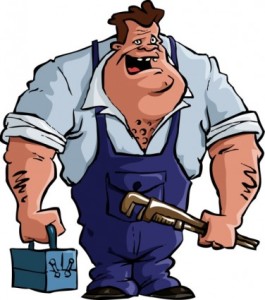 In my previous blog post Wave Your Tags — Part I, we looked at how the use of various tags works to bring story characters to life. They become realistic to the extent that the reader feels she knows them intimately. (That’s the reader who never wants the book to end.)
In my previous blog post Wave Your Tags — Part I, we looked at how the use of various tags works to bring story characters to life. They become realistic to the extent that the reader feels she knows them intimately. (That’s the reader who never wants the book to end.)
What else can the novelist do to make the most of this novel-writing technique?
Don’t Spare the Tags
If you’re working with a minor, walk-on character then one or two tags will suffice. Like so…
A barrel-chested man with dirty fingernails and grease-encrusted coveralls jerked a thumb toward the service bay. “That there your Buick?”
A major character deserves more. A continual reference to dirty fingernails can grind the story to a halt. What should you do? Create more tags.
Remember the types of character tags mentioned previously? Here’s a quick reminder:
- Appearance
- Speech
- Mannerism
- Attitude
With these four as your guide, work through the list and select two or three from of each of the four.
- Now let’s take that mechanic who we know by way of appearance, is a large man who is somewhat unkempt.
- Let’s further say that he growls when he talks, his voice raspy from years of chain smoking, and he consistently butchers the English language.
- A cigarette is always at hand, perhaps not lit (dangerous in a mechanic’s shop), and he habitually rubs the back of his hand on his stubbly chin.
- His shop is his kingdom and he’s king. He knows what you don’t know about your vehicle and plays it to the hilt. Out of his domain, however, he’s a lost soul.
Within a few minutes we have a living breathing character who, because of a few tags, is jumping off the page.
Actions Reveal Tags
Here’s where we bring the old adage of show don’t tell into play. Each one of the character tags can be demonstrated by the character’s actions.
As he talked he slowly wiped his hands on an already filthy grease rag, then crammed it into the back pocket of his coveralls. Slamming the door he made all the windows in the waiting area rattle. Looking back through the door window he gave a wink and a half-smile showing it wasn’t a mad-slam, but an I-don’t-know-my-own strength slam.
Once you begin to see this pattern, you’ll discover endless ways to weave bits of stage business in with your character tags. Readers love this.
Wave the Tags Often
One of the mistakes often made by a newbie novelist is to assume readers will remember all that has gone on before. They will not. Just because these tags are firmly entrenched in your mind – and duly noted in your notebook – doesn’t mean it’s the same for your reader.
Keep in mind readers may be finishing your novel that they started two weeks ago. We always hope not. We hope they stayed up reading till two in the morning because they couldn’t put your book down. Still and yet, they need to be reminded.
For this reason, bring the tags out and wave them as often as you can. Focus your readers’ attention on these tags, labels, traits, whenever that character steps on stage. Continually think of ways to vary how they are presented. This way they won’t seem to be repetitious.
This mechanic who is hooked on his nicotine habit is also hooked on the physical cigarette itself. In each scene you can think of a new way to show his need to have one either in his mouth or hand.
Study and Experiment
As you are aware – if you’ve been writing novels for very long at all – the character is revealed slowly. These pointers and guidelines will be brought into play a few at a time as the story unfolds. Simply use the ideas here for a checklist as you study your character and experiment with ways to make him or her ever more alive, realistic, and vibrant.
And while you’re at it you’ll be having fun, fun, fun. 

Coming Soon
The first two titles in the Norma Jean Lutz Classic Collection will be available in print form.
Flower in the Hills and Tiger Beetle at Kendallwood will soon be in bound copies.
Watch for upcoming announcements.


![]()


 When creating major characters in your novel, variety is the goal to strive for. Sameness can dull the effect. You want each character to portray a different dominant impression in the mind and eye of your reader. One of the ways to create these impressions is by using tags.
When creating major characters in your novel, variety is the goal to strive for. Sameness can dull the effect. You want each character to portray a different dominant impression in the mind and eye of your reader. One of the ways to create these impressions is by using tags.